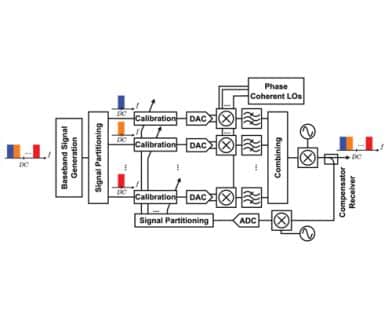Featured articles
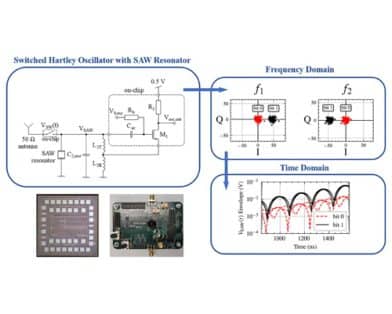
Noise Analysis of a 434-MHz Wakeup Receiver Analog Frontend Core With −93-dBm Input Sensitivity and 65-pJ/Bit Efficiency Based on a Switched Injection-Triggered Oscillator With Surface Acoustic Wave Resonator
by Georg Meller
Volume: 73, Issue: 5, May 2025
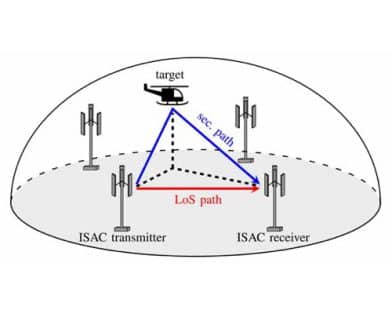
Bistatic OFDM-Based ISAC With Over-the-Air Synchronization: System Concept and Performance Analysis
by David Brunner
Volume: 73, Issue: 5, May 2025
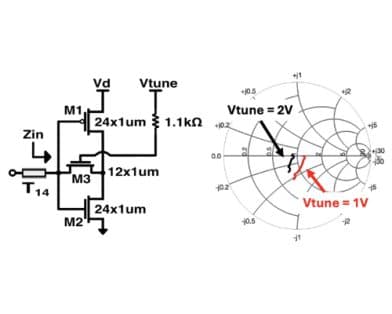
Active Broadband Termination for Distributed Amplifiers Using a 45-nm BiCMOS SOI Process
by Justin J. Kim
Volume: 73, Issue: 5, May 2025
About the journal
The IEEE Transactions on Microwave Theory and Techniques (T-MTT) is the preeminent publication concerning RF and microwave technology. It focuses on that part of engineering and theory associated with microwave/millimeter-wave components, devices, circuits, and systems involving the generation, modulation, demodulation, control, transmission, and detection of microwave signals. This includes scientific, technical, and industrial activities. Microwave theory and techniques relates to electromagnetic waves usually in the frequency region between a few MHz and a THz; other spectral regions and wave types are included within the scope of the Society whenever basic microwave theory and techniques can yield useful results. Generally, this occurs in the theory of wave propagation in structures with dimensions comparable to a wavelength, and in the related techniques for analysis and design.
The Impact Factor of T-MTT is 4.5 in 2024 and the acceptance rate is 26.1%. The average time from submission to first decision is 24.3 days and the average time from submission to final decision is 34.5 days.
Electronic Access is Available to digital subscribers through IEEE Xplore.
Current issue
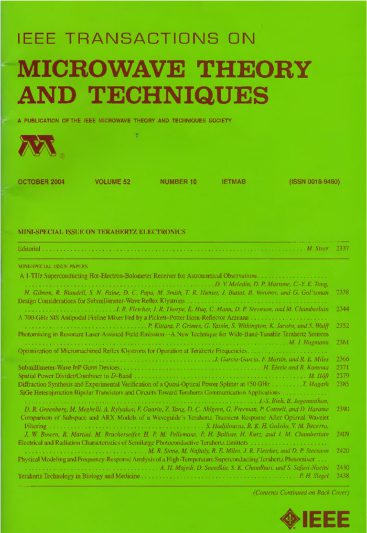
July 2025 Issue
Special Issue on Power Amplifiers for Communications and Satellite Applications
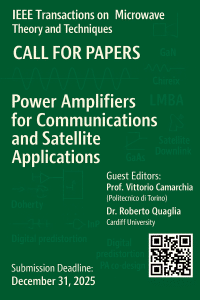 The design and implementation of power amplifiers (PAs) remain a cornerstone of RF and microwave transmitters, enabling energy efficient transmission of signals across wireless and satellite communication systems. The demand for high-performance, energy-efficient, and broadband PAs continues to grow with the evolution of 5G/6G cellular networks, satellite constellations, non-terrestrial networks, and emerging frequency bands up to millimeter-wave.
The design and implementation of power amplifiers (PAs) remain a cornerstone of RF and microwave transmitters, enabling energy efficient transmission of signals across wireless and satellite communication systems. The demand for high-performance, energy-efficient, and broadband PAs continues to grow with the evolution of 5G/6G cellular networks, satellite constellations, non-terrestrial networks, and emerging frequency bands up to millimeter-wave.
In 2026, the RF/microwave community will celebrate the 90th anniversary of the Doherty Power Amplifier and the 10th anniversary of the Load Modulated Balanced Amplifier (LMBA). These milestones mark a crucial moment to assess recent developments and future directions in high-efficiency amplification. This Special Issue aims to feature cutting-edge research on advanced PA architectures, enabling technologies, and system-level innovations for high-efficiency, linear, and broadband power amplification in both terrestrial and spaceborne communication systems.
The submission is accomplished through IEEE Author Portal website (https://ieee.atyponrex.com/submission/), in exactly the same way as any other regular MTT Transactions’ submission. When you prepare your manuscript, you should consult the Instructions for Authors (https://mtt.org/publications/t-mtt/information-for-authors/) and follow the T-MTT Word or LaTex Templates available there. Papers not following these templates cannot be accepted into the peer review process.
Special Issue Call for Papers: Emerging Materials and Processing Technologies for RF/microwave Applications and Wireless Systems

Novel materials, processes and manufacturing technologies have emerged in recent years, which have shown great potential in the development of RF/microwave and wireless systems and applications. Over the last 20 years, there has been a growing interest in RF/microwave materials and fabrication techniques, which enable the creation and innovation of devices, microwave circuits and systems over MHz-through-THz. This Special Issue on Emerging Materials and Processing Technologies for RF/Microwave and Wireless Systems and Applications is to promote this area by providing excellent opportunities for cross-disciplinary researchers and practitioners to share the recent progress on microwave materials and fabrication techniques.
The scope of this T-MTT Special Issue includes emerging RF/microwave materials and fabrication processes, which should present significant potential in advancing future RF, microwave, millimeter-wave, terahertz devices, circuits, and systems. This cross-disciplinary area brings together researchers, scientists, and engineers of different backgrounds to promote and exploit emerging and novel materials, processes, and manufacturing techniques. This also provides opportunities for the MTT-S community to share cross-disciplinary R&D activities and outcomes. Publishable manuscripts may include but not be limited to material engineering, chemical engineering, photonics/optical engineering, mechanical engineering and process engineering.
The submission is accomplished through the IEEE Author Portal website (https://ieee.atyponrex.com/submission/), in exactly the same way as any other regular MTT Transactions’ submission. When you prepare your manuscript, you should consult the Instructions for Authors (https://mtt.org/publications/t-mtt/information-for-authors/) and follow the T-MTT Word or LaTex Templates available there. Papers not following these templates cannot be accepted into the peer review process.
Special Issue Call for Papers: Latest Advances on Radar-Based Physiological Sensors and Their Applications
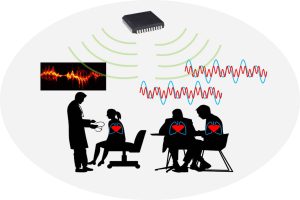
Contactless radar-based physiological sensors have become a topic of great interest in the last decade, enabled by recent hardware advances for automotive radar and next generation communications systems, and driven by a variety of healthcare, industrial, and security applications. Hardware advances include higher levels of transceiver integration with faster ADCs, more powerful processing, as well as integrated antennas and MIMO and beam steering capabilities. The need for unobtrusive monitoring is being driven by an aging population, higher levels of automation (IoT, UAV), development of smart environments, and NextG communications systems.
Automotive radar development has made millimeter-wave radar hardware readily available, operating in the ISM bands from 24 GHz to over 240 GHz, and including MIMO/beam steering capability. As automotive radar development grows to incorporate in-cabin monitoring, related hardware has become available for a number of other applications including perimeter security, vital signs health monitoring, occupancy sensing, and UAV-based monitoring. The emerging 6G communications standard will incorporate joint communication and sensing (JCAS), and more opportunities for radar sensing with communications signals to further drive advancement of physiological radar.
As technological development for physiological radar continues to grow, many fundamental questions remain: What is actually being measured? What are the optimum waveforms and operating frequencies for different applications? What are the fundamental limitations on radar sensitivity? What are the most useful metrics for assessing accuracy and benchmarking performance? What can be considered motion of interest and to what extent can it be isolated from extraneous motion?
This Special Issue solicits papers that report of the latest advancements in radar-based physiological sensors.
The submission is accomplished through IEEE Author Portal website (https://ieee.atyponrex.com/submission/), in exactly the same way as any other regular MTT Transactions’ submission. When you prepare your manuscript, you should consult the Instructions for Authors (https://mtt.org/publications/t-mtt/information-for-authors/) and follow the T-MTT Word or LaTex Templates available there. Papers not following these templates cannot be accepted into the peer review process.
